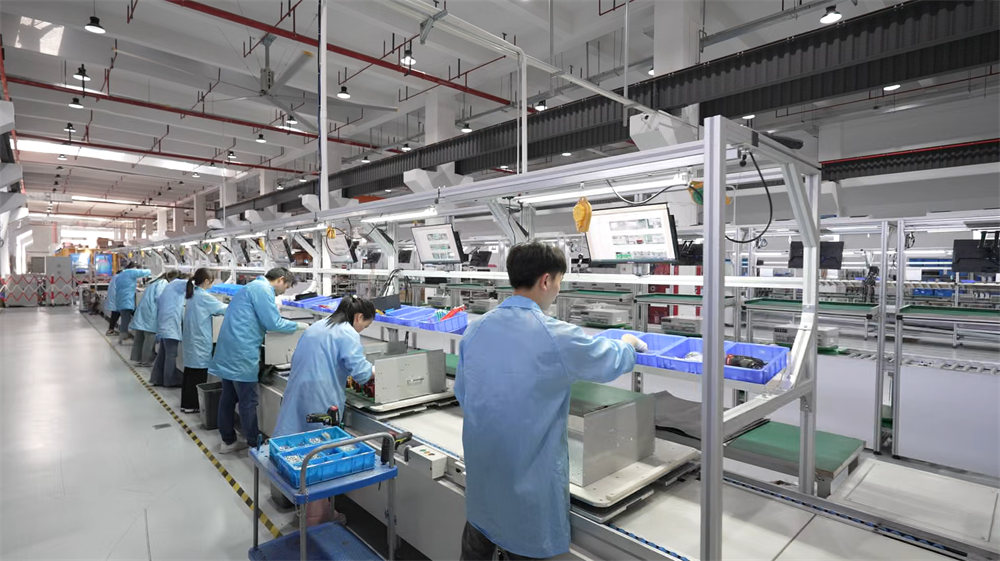
Wir alle wissen, dass der vollständige Name von AHF Ist Aktiver Oberwellenfilter , gibt es also so etwas wie eine Passiver Oberwellenfilter ?
Die Antwort ist JA!
Doch hier stellt sich die große Frage: Verstehen Sie wirklich die Unterschiede zwischen aktiven und passiven Oberschwingungsfiltern und wissen Sie, wann Sie sich für das eine oder das andere entscheiden sollten? Wir erklären es Ihnen auf eine Weise, die leicht verständlich und dennoch technisch korrekt ist.

In einem idealen Stromnetz sollten Spannungs- und Stromwellenformen reine Sinuskurven sein. In modernen Stromnetzen verzerren jedoch nichtlineare Lasten wie Frequenzumrichter, USV-Systeme, LED-Beleuchtung und Schaltnetzteile diese Wellenformen. Diese Verzerrung erzeugt Obertöne — unerwünschte Vielfache der Grundfrequenz (50 Hz oder 60 Hz).
Oberschwingungen sind nicht nur ein „technisches Ärgernis“. Sie können folgende Ursachen haben:
Überhitzung in Transformatoren, Kabeln und Motoren
Störendes Stolpern von Leistungsschaltern
Reduzierte Lebensdauer der Ausrüstung
Schlechte Energieeffizienz und höhere Stromrechnungen
Interferenz mit empfindlicher Elektronik und Steuerung
Je höher der Grad der harmonischen Verzerrung (gemessen als THD – Total Harmonic Distortion ), desto größer ist das Risiko für die Qualität Ihrer Stromversorgung und die Zuverlässigkeit Ihrer Geräte.
Deshalb suchen Industrien, Rechenzentren, Produktionsanlagen und Gewerbegebäude nach harmonische Filter — Geräte zur Reduzierung der harmonischen Verzerrung und zum Schutz des Stromnetzes und der angeschlossenen Lasten.
Ein Aktiver Oberwellenfilter ist ein dynamisches, intelligentes Gerät, das harmonische Ströme in Echtzeit erkennt und gleich große, aber entgegengesetzte Ströme einspeist, um sie zu kompensieren. Stellen Sie es sich wie „Kopfhörer mit Geräuschunterdrückung“ vor, nur für Ihr elektrisches System.
Hauptmerkmale:
Echtzeitüberwachung der elektrischen Wellenform
Dynamische Kompensation das sich sofort an Laständerungen anpasst
Erweiterte Steuerungsalgorithmen um mehrere harmonische Ordnungen gleichzeitig anzusprechen
Bietet auch zusätzliche Vorteile wie Leistungsfaktorkorrektur und Lastausgleich
Da AHFs Leistungselektronik und digitale Steuerung verwenden, sind sie nicht auf eine oder zwei harmonische Frequenzen beschränkt – sie können ein breites Spektrum bewältigen, was sie in Umgebungen mit unterschiedlichen Belastungen äußerst effektiv macht.
A Passiver Oberwellenfilter ist viel einfacher aufgebaut und besteht aus festen elektrischen Komponenten wie Widerständen, Induktoren und Kondensatoren. Diese Komponenten sind auf bestimmte harmonische Frequenzen – wie die 5., 7. oder 11. – abgestimmt, um diese unerwünschten Ströme „einzufangen“ oder zu absorbieren.
Obwohl PHF (Passive Harmonic Filter) kein weithin standardisierter Begriff ist, finden Sie ihn möglicherweise in einigen Datenblättern oder technischen Dokumenten. Häufiger bezeichnen Hersteller sie als Passive Filter (PF) .
Hauptmerkmale:
Feste Abstimmung zu bestimmten harmonischen Ordnungen
Keine aktive Überwachung – arbeitet jederzeit passiv
Normalerweise niedrigere Anschaffungskosten
Einfaches Design mit minimalem Elektronikeinsatz
| Besonderheit | Aktiver Oberwellenfilter (AHF) | Passiver Oberwellenfilter (PHF) |
|---|---|---|
| Technologie | Leistungselektronik mit Echtzeit-Regelalgorithmen | Feste LC-Schaltungen, die auf bestimmte harmonische Frequenzen abgestimmt sind |
| Oberwellenkompensation | Großes Sortiment, mehrere Bestellungen gleichzeitig | Beschränkt auf entworfene harmonische Ordnungen |
| Anpassungsfähigkeit | Hohe Anpassungsfähigkeit an Laständerungen | Keine Anpassung – feste Abstimmung |
| Größe und Gewicht | Kompakt und modular | Bei gleicher Kapazität oft größer und schwerer |
| Kosten | Höhere Vorlaufkosten | Niedrigere Vorlaufkosten |
| Wartung | Minimal, hauptsächlich Software-Updates | Komponentenaustausch im Laufe der Zeit (Kondensatoren, Induktoren) |
| Zusatzfunktionen | Kann auch Leistungsfaktorkorrektur und Lastausgleich bereitstellen | Primär nur harmonische Reduktion |
Wählen Sie AHF, wenn:
Ihre Anlage verfügt über eine Vielzahl nichtlinearer Lasten mit unterschiedlichen Betriebsbedingungen
Sie benötigen eine Kompensation für mehrere harmonische Ordnungen gleichzeitig
Sie benötigen außerdem eine dynamische Leistungsfaktorkorrektur oder einen Lastausgleich
Der Platz ist begrenzt und Sie möchten eine kompakte, modulare Lösung
Wählen Sie PHF, wenn:
Harmonische Verzerrungen werden von einer oder zwei bestimmten Ordnungen dominiert
Die Lastbedingungen sind stabil und vorhersehbar
Budgetbeschränkungen haben Priorität
Sie bevorzugen eine einfachere, passive Technologie ohne Elektronik
Aktive Oberwellenfilter werden häufig verwendet in:
Rechenzentren mit schwankender Serverauslastung
Fertigungslinien mit mehreren Frequenzumrichtern
Gewerbegebäude mit gemischter Beleuchtung, HLK- und IT-Ausrüstung
Systeme für erneuerbare Energien zur Handhabung von Wechselrichter-bedingten Oberschwingungen
Passive Oberwellenfilter kommen häufiger vor in:
Schwere Industrieanlagen mit großen Motoren mit konstanter Drehzahl
Bergbaubetrieb mit vorhersehbaren Oberschwingungsquellen
Anwendungen, bei denen der Platz keine große Einschränkung darstellt und das Budget knapp ist
Sowohl aktive als auch passive Oberschwingungsfilter spielen eine wichtige Rolle bei der Verbesserung der Stromqualität – sie sind jedoch nicht austauschbar. Um die richtige Wahl zu treffen, ist es wichtig, Ihr Lastprofil, Ihr Oberschwingungsspektrum und Ihre betrieblichen Prioritäten zu verstehen.
Wenn Sie mehr erfahren möchten über AHF , SVG oder kundenspezifisch Lösungen zur Stromqualität Für Ihre Anwendung kontaktieren Sie uns gerne. Unsere erfahrenen Ingenieure analysieren Ihr System, empfehlen die am besten geeignete Technologie und entwickeln eine auf Ihre Bedürfnisse zugeschnittene Lösung.
Eine bessere Stromqualität bedeutet eine bessere Leistung, eine längere Lebensdauer der Geräte und ein effizienteres Stromnetz – und davon kann jedes Unternehmen profitieren.
Abonnieren Sie uns, um in den Genuss von Veranstaltungspreisen zu kommen und einige der besten Preise zu erhalten.
 IPv6-Netzwerk unterstützt
IPv6-Netzwerk unterstützt

